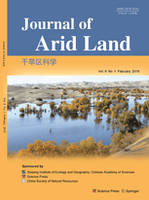
Journal of Arid Land
Scope & Guideline
Fostering interdisciplinary dialogue on arid land management.
Introduction
Aims and Scopes
- Ecological Dynamics in Arid Regions:
Research articles often focus on the biodiversity, plant community dynamics, and ecological interactions within arid ecosystems, emphasizing how species adapt to extreme conditions. - Hydrological Processes and Water Management:
The journal publishes studies on the hydrological cycles in arid regions, including water conservation, groundwater recharge, and the impacts of climate change on water resources. - Land Use and Land Cover Change:
A significant focus is given to the analysis of land use changes, their ecological impacts, and the driving factors behind these transformations, particularly in relation to agriculture and urban development. - Climate Change Effects:
Articles frequently explore the impacts of climate change on vegetation, soil health, and ecosystem services, aiming to understand resilience and adaptation strategies. - Soil Health and Management Practices:
Research on soil properties, management practices, and their implications for sustainable land use in arid environments is commonly featured, including studies on soil erosion, salinization, and restoration techniques. - Ecosystem Services and Sustainability:
The journal highlights research on the valuation of ecosystem services in arid landscapes, exploring the trade-offs and synergies between environmental health and human activities.
Trending and Emerging
- Climate Resilience and Adaptation Strategies:
An increasing number of studies focus on resilience and adaptation strategies to cope with climate variability and extreme weather events, reflecting a growing need for sustainable practices in arid regions. - Technological Applications in Resource Management:
Emerging research emphasizes the use of technology, such as remote sensing and GIS, to monitor and manage natural resources more effectively, indicating a trend towards data-driven decision-making. - Integrated Ecosystem Management:
There is a growing interest in integrated approaches that consider ecological, social, and economic dimensions of management, particularly in the context of land use planning and biodiversity conservation. - Effects of Land Use Change on Ecosystem Services:
Research increasingly examines how changes in land use affect ecosystem services, highlighting the importance of understanding these relationships for policy and management. - Soil Microbial Interactions and Health:
A notable trend is the focus on soil microbial communities and their roles in nutrient cycling, soil health, and plant interactions, reflecting a deeper understanding of soil ecology.
Declining or Waning
- Historical Climate Analysis:
Research focusing on historical climate patterns and their implications has become less frequent, possibly as the field shifts towards more immediate and applied climate change studies. - Traditional Agricultural Practices:
There is a noticeable decrease in studies centered on traditional agricultural methods, which may be overshadowed by more innovative and sustainable agricultural practices that are gaining traction. - Invasive Species Impact Studies:
Research specifically examining the effects of invasive species in arid regions has waned, potentially as the focus broadens towards integrated ecosystem management approaches. - Basic Soil Chemistry Studies:
While soil studies remain important, basic chemical analyses of soils are becoming less prominent, as more complex interactions and multi-faceted approaches are favored. - Static Biodiversity Assessments:
Static assessments of biodiversity without consideration of dynamic ecological processes are appearing less frequently, indicating a shift towards more integrative and process-oriented studies.
Similar Journals

International Soil and Water Conservation Research
Leading the charge in global conservation research.International Soil and Water Conservation Research is a premier, peer-reviewed academic journal dedicated to advancing the field of soil and water conservation. Published by KEAI PUBLISHING LTD in China, this Open Access journal has established itself as a vital resource since its inception in 2013, offering researchers and practitioners an unparalleled platform for sharing innovative research and methodologies. With its impressive impact factor and recognition as a Q1 category journal in Agronomy, Water Science, Nature and Landscape Conservation, and Soil Science, it ranks among the top journals in its field, as evidenced by its high Scopus ranks—with ranks such as #10 in Soil Science and #12 in Nature and Landscape Conservation. The journal is committed to not only enhancing the scientific community's understanding of conservation practices but also addressing global challenges related to sustainable land and water resource management. By fostering interdisciplinary collaboration, International Soil and Water Conservation Research serves as an essential reference point for scholars, professionals, and students aiming to contribute to sustainable practices and policies in the context of agriculture and environmental management.

Bulletin of Geography-Physical Geography Series
Illuminating the complexities of our physical world.The Bulletin of Geography-Physical Geography Series is a prominent open-access journal dedicated to advancing the field of physical geography. Published by Nicolaus Copernicus University in Poland, this journal has been a vital resource for researchers, professionals, and students alike since its inception in 2009. With an ISSN of 2080-7686 and an E-ISSN of 2300-8490, it contributes significantly to the academic discourse in geography, planning and development, and geophysics, boasting a 2023 Scopus rank of #385 in Social Sciences and #84 in Earth and Planetary Sciences. The journal aims to disseminate innovative research and critical insights that address contemporary challenges in physical geography, making it a valuable platform for those seeking to contribute to or stay informed about the latest developments in the field. With its commitment to quality and accessibility, the Bulletin of Geography-Physical Geography Series plays a crucial role in fostering scholarly exchange and collaboration globally.
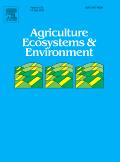
AGRICULTURE ECOSYSTEMS & ENVIRONMENT
Bridging Agriculture and Ecology for Future GenerationsAGRICULTURE ECOSYSTEMS & ENVIRONMENT is a premier journal published by Elsevier, specializing in the fields of agronomy, animal science, and ecology. With an impressive impact factor reflective of its stature, it ranks in the top quartile (Q1) across three significant categories, highlighting its critical role in advancing research within the agricultural and environmental sciences. The journal serves as a vital platform for disseminating high-quality research that addresses the complex interactions between agriculture and ecosystems, providing insightful methodologies and findings that inform sustainable practices. As the journal continues to converge from 1983 and through to 2025, it remains committed to offering both traditional and innovative access options while contributing to the academic community's understanding of pressing environmental challenges. Researchers, professionals, and students are encouraged to engage with the journal's comprehensive content, which is positioned among the elite in its fields, having achieved top rankings in Scopus across relevant disciplines.

Carpathian Journal of Earth and Environmental Sciences
Fostering Collaboration in Earth and Environmental ResearchCarpathian Journal of Earth and Environmental Sciences is a distinguished academic journal dedicated to advancing the interdisciplinary field of Earth and environmental sciences. Published by the Carpathian Association for Environment and Earth Sciences, this journal plays a pivotal role in disseminating high-quality research focused on the dynamic interactions between geological processes and environmental changes. With an ISSN of 1842-4090 and an E-ISSN of 1844-489X, the journal is indexed in Scopus and holds an esteemed Q3 quartile ranking in both Earth and Planetary Sciences and Environmental Science categories as of 2023. Since its inception in 2008, the Carpathian Journal has provided an open access platform for researchers, professionals, and students to share insights, foster collaboration, and engage in critical discussions on pressing environmental issues. By continuously contributing to the body of knowledge in this field, the journal not only enhances academic discourse but also promotes sustainable environmental practices across Romania and beyond.

FOLIA GEOBOTANICA
Fostering a deeper understanding of our planet's botanical history.FOLIA GEOBOTANICA, published by Springer, is a distinguished journal dedicated to advancing the fields of Paleontology and Plant Science through the dissemination of high-quality research. With an ISSN of 1211-9520 and an E-ISSN of 1874-9348, this journal has been pivotal in providing a platform for innovative studies from 1994 to 2024. Notably, FOLIA GEOBOTANICA holds a Q3 ranking in Paleontology and a Q2 ranking in Plant Science as of 2023, affirming its relevance and contribution to the scholarly community. The journal is located in the Netherlands at VAN GODEWIJCKSTRAAT 30, 3311 GZ DORDRECHT, and is not an Open Access publication, ensuring comprehensive review processes and scholarly integrity. With Scopus rankings that place it in the 50th percentile for Plant Science and 46th for Paleontology, FOLIA GEOBOTANICA continues to attract researchers, professionals, and students who are keen to explore the intricacies of plant ecology and fossil records, thereby fostering a deeper understanding of ecological and evolutionary patterns.
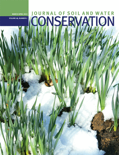
JOURNAL OF SOIL AND WATER CONSERVATION
Fostering collaboration for sustainable land management.The JOURNAL OF SOIL AND WATER CONSERVATION, published by the Soil Water Conservation Society, is a leading peer-reviewed journal dedicated to the critical fields of agronomy, soil science, and water conservation. With its inception in 1973 and a convergence period extending to 2024, the journal plays a pivotal role in disseminating innovative research, management practices, and policy analysis aimed at promoting sustainable land and water resource management. The journal boasts an impressive Impact Factor and ranks in the Q1 and Q2 quartiles across key categories, including Agronomy and Crop Science, Nature and Landscape Conservation, and Water Science and Technology. It serves as an essential platform for researchers, professionals, and students to engage with cutting-edge findings that address pressing environmental challenges. Through its commitment to advancing the science of soil and water conservation, this journal remains a vital resource for enhancing ecological integrity and promoting sustainable agricultural practices.

WETLANDS ECOLOGY AND MANAGEMENT
Connecting research to real-world wetland management solutions.Wetlands Ecology and Management, published by Springer, is an esteemed journal that has been advancing the field of wetland studies since its inception in 1982. Operating under the ISSN 0923-4861 and E-ISSN 1572-9834, this journal is headquartered in the Netherlands and serves as a critical resource for researchers, professionals, and students alike. It fosters interdisciplinary dialogue among aquatic science, ecology, and resource management disciplines, ranking in the Q2 category for Aquatic Science and Ecology, Evolution, Behavior and Systematics as of 2023. With a notable Scopus ranking, it is positioned favorably within the 65th percentile in Ecology and a commendable 58th percentile in Aquatic Sciences. The journal emphasizes the importance of effective management strategies and policies in the conservation of wetlands, making it indispensable for those aiming to drive impactful research. Although it is not an open-access journal, its high-quality publications remain accessible through library consortia and institutional subscriptions, ensuring that pertinent insights into the ecological dynamics and sustainable management practices are available to the global research community.

Folia Oecologica
Unveiling Insights into Our Natural World.Folia Oecologica is a distinguished open-access journal published by WALTER DE GRUYTER GMBH, focusing on critical research in the fields of agricultural and biological sciences, ecology, and forestry. Established as a vital platform for the dissemination of knowledge, this journal has been providing free access to its valuable content since 2017, catering to an international audience engaged in environmental and ecological studies. With its ISSN 1336-5266 and E-ISSN 1338-7014, Folia Oecologica has earned notable ranks in Scopus, placing it in the 62nd percentile for Agricultural and Biological Sciences and the 50th percentile for Environmental Science. The journal's commitment to high-quality research is reflected in its positions in the Q2 and Q3 quartiles across various categories in 2023. As it converges years from 2006 to 2024, Folia Oecologica continues to foster scholarly dialogue and collaboration among researchers, professionals, and students, making significant contributions to the understanding and preservation of our ecological systems.
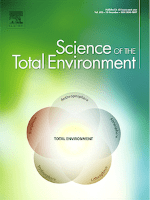
Science of The Total Environment
Fostering a Deeper Understanding of Our Total EnvironmentScience of The Total Environment, an esteemed journal published by Elsevier, holds a significant position in the field of environmental science, encompassing critical areas such as Environmental Chemistry, Environmental Engineering, Pollution, and Waste Management and Disposal. With an impressive impact factor and ranked in the Q1 quartile across its categories for 2023, the journal is recognized for its high-quality research output and contribution to environmental sustainability. Operating from its base in the Netherlands, the journal has been a valuable resource since its inception in 1972, welcoming innovative studies that address complex environmental challenges. Its notable rankings—such as Rank #9 in both Environmental Sciences and Pollution—underscore its relevance and influence in the academic community. Although the journal currently does not provide an open access option, the robust findings and discussions presented within its pages continue to foster a deeper understanding of environmental issues. Science of The Total Environment is an essential platform for researchers, professionals, and students dedicated to advancing knowledge and solutions in the rapidly evolving field of environmental science.
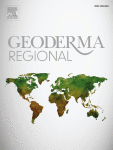
Geoderma Regional
Uncovering the vital role of soil in environmental sustainability.Geoderma Regional is a premier scholarly journal dedicated to advancing the field of Soil Science. Published by Elsevier in the Netherlands, this journal serves as a vital platform for disseminating high-quality, peer-reviewed research that spans the complexities of soil management, behavior, and the implications of soil processes on environmental sustainability. Since its inception in 2014, Geoderma Regional has achieved an impressive position within the academic community, holding a Q1 ranking in the field of Soil Science, placing it among the top 20% of journals in its category according to SCOPUS rankings. This journal is particularly distinguished for its significant contributions to the nexus between agriculture and biological sciences, reflected in its rank of #33 out of 159 in this field with a commendable 79th percentile. Researchers, professionals, and students alike will appreciate the journal's commitment to open discourse and innovative research agendas as it aspires to enhance our understanding of soil dynamics, addressing critical issues facing our planet.